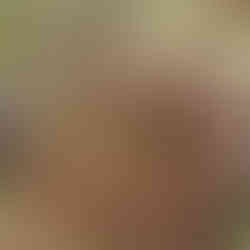Nature's Palette of Brilliant Fall Colors
- Barbara
- Sep 29, 2023
- 4 min read
The summer days have passed by so quickly! Fall has arrived with a brilliance of colors.
Blue skies and leaves of yellow, orange, and red are creating the finest of nature's
masterpieces.
While most of us think of trees changing color each fall, don't forget to enjoy the changing hues of the many shrubs that create their own show this time of the year. Let me take a moment to remind you of just a few of the great choices that we have for fall color here at Green Valley.
This is a great time of the season to enjoy the color of the Dogwood shrubs. The Prairie Fire dogwood has creamy-white flowers that appear in spring followed by white berries mid-summer. Bright golden leaves fade to yellow then red in the fall. Red stems provide winter interest. The mature size is 5 feet tall and wide. The Neon Burst dogwood is a compact shrub with chartreuse foliage. Stems have a red hue early in the season. Fall foliage is a rainbow of purple, red, yellow, and orange hues.
Tiger Eyes Sumac is characterized by chartreuse new growth that quickly turns to yellow. People often say, “It has a tropical look.” The fall color is a stunning orange/red. Tiger Eyes Sumac can tolerate wet or dry soil. It grows to a size of 6 feet tall and wide.
Lacette™ Sumac thrives in tough sites and is a great choice for both formal and informal landscapes. The foliage is green in the summer and turns to shades of red during the fall. Small yellow flowers in the spring are followed by red fruit that the birds enjoy. This shrub is an excellent component to bird and butterfly gardens.
Cranberry cotoneaster will bring a low-growing splash of color to the backyard. With recurving branches, bright foliage, and vivid, red berries, they are known for a spectacular fall fruit display. Growing to a height of 2 – 3 feet and a width of 3 – 6 feet, these plants make a great groundcover but can also serve as short hedges.
Hedge cotoneaster is a more rounded upright plant than the common wide, sprawling cotoneaster. Because of its dense, upright habit and its tolerance of shearing, hedge cotoneaster is oftentimes used for hedging, privacy screens, or shelter belts. The foliage turns orange/red in the fall. The birds enjoy the black berries that persist into winter. Mature size will reach 8 - 10 feet tall by 4 - 5 feet wide.

Another excellent choice to enhance your landscape is the Low Scape Hedger chokeberry which grows well just about anywhere. It grows in full sun or part shade, wet or dry soils, in hot climates or cold ones. It is also a non-suckering shrub that can be pruned into a formal hedge or left to grow naturally. Small white flowers cover the shrub in spring, followed by dark purple/black, edible berries. Glossy green foliage turns bright red/orange in the fall.
Autumn Magic Black Chokeberry is dressed in white flowers in May, followed by edible, dark purple-black berries. The berries may be eaten fresh or used in baking, jam, juice, or wine. Fall color foliage is reddish-purple. Hardy to Zone 3, this shrub requires full sun to part shade. It grows to a size of 3 – 5 feet tall and 2 – 4 feet wide.

Little Goblin winterberry holly offers white flowers in the spring and vivid berries in the fall, but on a compact shrub that fits small spaces much better than other winterberry varieties. There’s a red-berried Little Goblin and one with orange berries. Keep in mind that you will need a Little Goblin Guy for pollination to get the berries. One Little Goblin Guy can pollinate 5 – 7 females within 50 feet.
Standing Ovation Serviceberry also has white flowers in the spring, sometimes turning into edible black berries. Dark green, almost circular leaves, change to red and orange in autumn. The perfectly oval form of the shrub gives a vertical accent and interest all season.
If you are looking for a good screen or hedge plant for privacy, Bailey Compact Amur Maple grows to a size of 7 - 9 feet tall and wide. The leaves turn brilliant red in the fall. It is sure to be a stunning part of the autumn landscape.

Don't forget about honeysuckle when looking for fall color. Though many of us think of meandering vines with flowers of various colors when we hear the word "honeysuckle", there are many shrubs to choose from as well. A couple of varieties sure to give great color are the Kodiak Red and Kodiak Black honeysuckle. The Kodiak Red variety seems to be a favorite of landscapers. It is very adaptive and drought tolerant. The new growth is a stunning red. Kodiak Black stands out with dark burgundy/black foliage. The color is especially intense in spring and summer. Bright yellow flowers add contrast in early summer.
While you may not think of roses as shrubs to plant for fall color, they are quite an excellent
choice, as many varieties of roses provide color continually until the fall frost makes it's
appearance on the landscape. Green Valley has many varieties to choose from throughout the planting season.

Now I ask you, "Are you really done with your planting each season as the end of September rolls around?" If you are like many gardeners, there is always room for something more, and fall is a good time to add a brilliant accent to your landscape. Stop by Green Valley, and we will be happy to help you with choosing the right shrub to add to your fall palette.
May we never stop growing!
Barbara

















Comentários